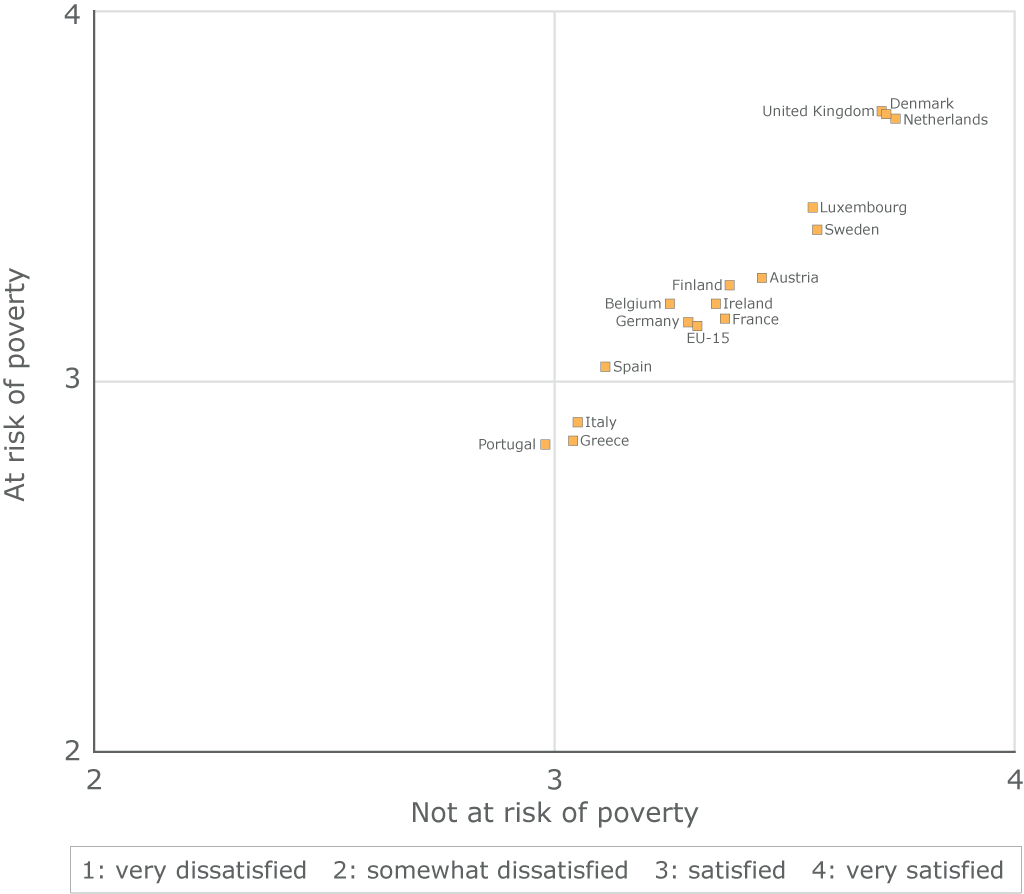Living conditions can affect the quality of life of older people in two different ways. The first is objective and regards the characteristics of dwellings. The second, instead, is subjective and respond to elder’s perceptions of how they accomplish the fulfilment of their needs. Both, together with their individual characteristics, build what has been defined as “residential satisfaction”. In their study Celia Fernández-Carro, Juan A. Módenes and Jeroen Spijker analyse both the levels of residential satisfaction and its determinants among older Europeans. The authors found that most part of older people in the EU15 positively evaluate their housing situation regardless of their country of residence or their income level.
Fernández-Carro and her colleagues also show that the association between perceived living conditions and residential satisfaction is consistent across Europe, even if there are important differences regarding the strength of this effect. For example, living conditions are much more important for poorer individuals in explaining residential satisfaction of older people in Europe.
Determinants of residential satisfaction
Overall, the degree of residential satisfaction among older Europeans is remarkably high, even among those at risk of poverty. Despite this positive evaluation, the authors found that Southern European countries split the clear geographical pattern of the remaining countries by showing the lowest levels of residential satisfaction (Figure 1). They also detect a gap between older people at-risk- and not-at-risk- of poverty regarding household quality, such as home maintenance problems, that is considerably wider in Southern Europe.
Results confirm that also personal characteristics are partially responsible for residential satisfaction among older people in Europe. For example, older tenants show lower levels of residential satisfaction than their counterparts that are house owners. Following the same line, a higher residential satisfaction all around the EU15 is declared by older people who do not consider housing costs to be a financial burden. Furthermore, their health status plays an important role: those who report having bad o very bad health are more inclined than those without health problems to declare satisfaction with their residential situation in nine countries across Europe.
Fernández-Carro et al. identify four components of living conditions that better explain elders’ residential satisfaction in Europe: access to services and basic dwelling facilities having a positive effect, and inadequate housing maintenance and environmental problems being negatively associated (Figure 2). Having easy access to community services is positively associated with residential satisfaction in Scandinavia, Western and Southern Europe. Following the same line, the degree of residential satisfaction of older people depends on the dwelling’s equipment only in Mediterranean countries, independently of their income level.
Fernández-Carro and her colleagues recognise a clear homogeneous European pattern of the negative influence of inadequate housing maintenance in residential satisfaction, the only exceptions are Denmark and Finland. Instead, the negative effect of perceived environmental shortages for older households not at risk of poverty does not follow a regional pattern and it is significant only for the lower income group in Italy, Ireland and the UK.

Figure 1: Residential satisfaction averaged scores by country comparing socio-economic groups.
This Population Digest has been published with financial support from the Progress Programme of the European Union in the framework of the project “Supporting a Partnership for Enhancing Europe’s Capacity to Tackle Demographic and Societal Change”.